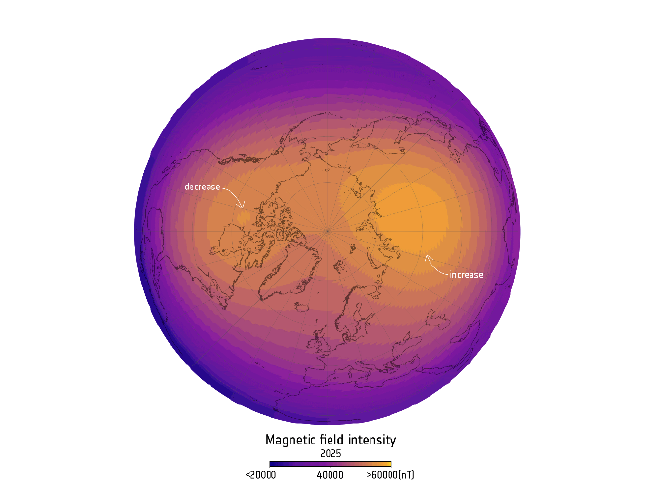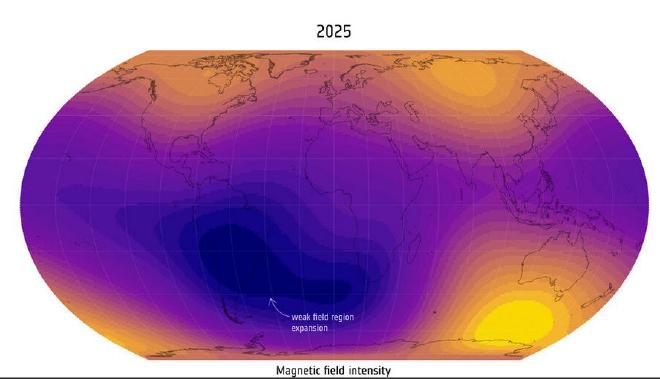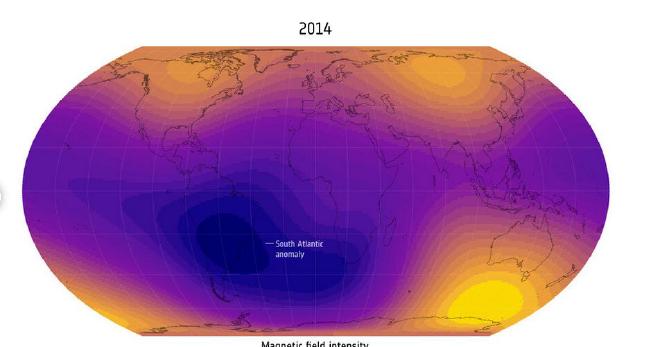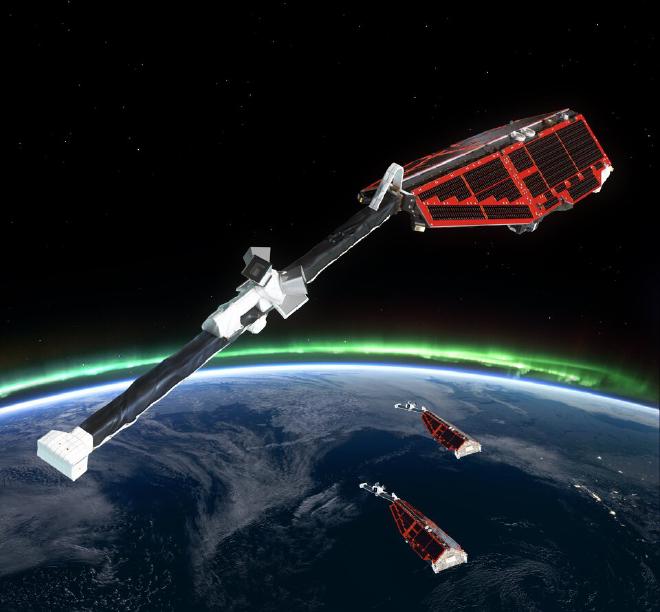

Earth’s magnetic field is vital to life on our planet. It is a complex and dynamic force that protects us from cosmic radiation and charged particles from the Sun. It is largely generated by a global ocean of molten, swirling liquid iron that makes up the outer core around 3000 km beneath our feet. Acting like a spinning conductor in a bicycle dynamo, it creates electrical currents, which in turn, generate our continuously changing electromagnetic field – but in reality the processes that generate the field are far more complex.
Swarm, an Earth Explorer mission developed under ESA’s Earth Observation FutureEO programme, comprises a constellation of three identical satellites that precisely measure the magnetic signals that stem from Earth’s core, mantle, crust and oceans, as well as from the ionosphere and magnetosphere.
Thanks to this exceptional mission -ESA said-, scientists are gaining more insight into the different sources of magnetism to help understand how and why the magnetic field is weakening in some places and strengthening in others.

The weak field South Atlantic Anomaly was first identified southeast of South America back in the 19th century.

Today, the South Atlantic Anomaly is of particular interest for space safety, as satellites passing over the region are faced with higher doses of incoming radiation. This can lead to malfunctions or damage to critical hardware, and even blackouts.
Published this month in Physics of the Earth and Planetary Interiors, the latest results from the Swarm mission reveal that while the South Atlantic Anomaly expanded steadily between 2014 and 2025, a region of the Atlantic Ocean southwest of Africa has experienced an even faster weakening of Earth’s magnetic field since 2020.
This behaviour is linked to strange patterns in the magnetic field at the boundary between Earth’s liquid outer core and its rocky mantle, known as reverse flux patches.
Professor Finlay explained: “Normally we’d expect to see magnetic field lines coming out of the core in the southern hemisphere. But beneath the South Atlantic Anomaly we see unexpected areas where the magnetic field, instead of coming out of the core, goes back into the core. Thanks to the Swarm data we can see one of these areas moving westward over Africa, which contributes to the weakening of the South Atlantic Anomaly in this region.”
Swarm’s record-breaking 11 years #
The latest model of Earth’s core-generated magnetic field marks a new milestone for ESA’s Swarm satellites, which have now provided the longest continuous record of magnetic field measurements from space.
The satellites were launched on 22 November 2013 as the fourth Earth Explorer mission, pioneering satellites that form a key component of ESA’s forward-looking FutureEO programme.

Conceived as demonstrators of innovative Earth observation technologies, these missions have long outlived their original design lifetime, become integral to long-term records, provided data for critical operational services, and have paved the way for future generations of satellites.
Swarm data underpin the global magnetic models used for navigation, monitor space weather hazards, and allow unprecedented insights into our Earth system from its core through to the outer reaches of Earth’s atmosphere.
Earth’s magnetic field strengthens over Siberia #
“When you’re trying to understand Earth’s magnetic field, it’s important to remember that it’s not just a simple dipole, like a bar magnet. It’s only by having satellites like Swarm that we can fully map this structure and see it changing,” said Prof. Finlay.
However, since Swarm has been in orbit the magnetic field over Siberia has strengthened while it has weakened over Canada. The Canadian strong field region has shrunk by 0.65% of Earth’s surface area, which is almost the size of India, while the Siberian region has grown by 0.42% of Earth’s surface area, which is comparable to the size of Greenland.

This shift, which is caused by complex processes going on in Earth’s turbulent core, is associated with the northern magnetic pole moving towards Siberia in recent years. This shift is important for navigation, which is affected by the dance between these two areas of strong magnetic field.
ESA’s Swarm Mission Manager, Anja Stromme, said: “It’s really wonderful to see the big picture of our dynamic Earth thanks to Swarm’s extended timeseries. The satellites are all healthy and providing excellent data, so we can hopefully extend that record beyond 2030, when the solar minimum will allow more unprecedented insights into our planet.”
Contact [Notaspampeanas](mailto: notaspampeanas@gmail.com)

